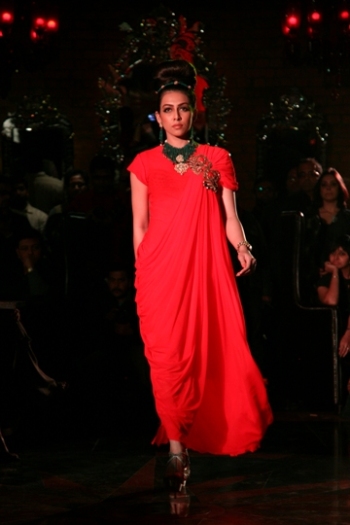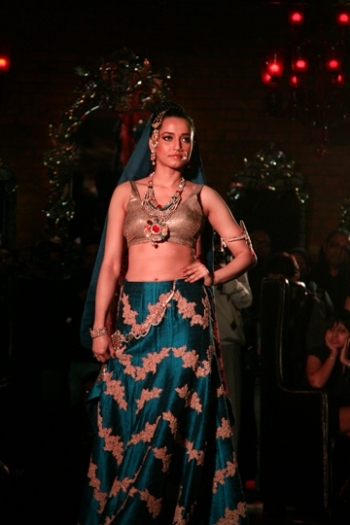Texture constitutes an important chapter in fashion designing – Why? – Because texture greatly affects the look of a garment, the feel, its lucidity in a way influencing the appearance of the person wearing the garment.
Texture is basically connected to the weave of the fabric. Sometimes we can texturize the fabric by adding stitched details, pin tucks and embellishments as well.
Each fabric has its individual character and charm – a wise choice of mix & design to fit the silhouette of our body can result in exquisite fashion. But before we evaluate the myriad charms of different types of fabric it is necessary to understand the importance of texture.
To start with I have penned down several common questions about texture –
Where is texture found?
In the thickness & appearance of fabric
What words describe texture?
Loopy, fuzzy, furry, soft, shiny, dull, bulky, rough, crisp, smooth and sheer
Why is texture important in fashion?
It can increase or decrease the body size, it can draw added attention to a design
Texture Can Create Illusion
The weave and texture of a fabric have an impact on the way it drapes, which, in turn, affects the way a garment looks when it is worn. Going by the word – ‘texture is surface interest’, you can gleefully play on your appearance and wisely cover body contours that you don’t wish to show.
Interestingly textures have weight, size, bulk and light absorbing or reflecting properties. To appear pounds thinner, look for fabrics that are medium to lightweight which are crisp, but not stiff. Very stiff fabrics appear to add weight to the body. Examples include linen, twill, gabardine, most double knits and fine-wale corduroy.
Dull or matte finish textures absorb light and generally make the figure look smaller. Look for such fabrics as raw silk, taffetas, gingham, denim, wool jersey, sailcloth, broadcloth and chambray.
A smooth texture is slimming and tends to hide figure irregularities. These fabrics will not add apparent weight unless the fabric is thick. Fabric examples include flannel, percale, velveteen, crepe, linen, shantung, seersucker, wool challis etc.
Creating Shapes from Texture
In this segment we are going to consider texture for different body types –
Tall people should avoid bulky and weighty textures. The best suited textures for tall people are smooth and shiny ones. Crisp textures with tailored cut helps accentuate body curves enhancing the overall personality of the individuals.
Short people should pick from soft and dull textures, those that won’t draw the focus to the body size but will evenly distribute it to aspects as shape and contours.
While choosing textures do give in to two tests – tactile and visual, some textures can only be felt, but commonly textures can be distinguished visually. Not all textures that are visually appealing can be worn. To wear or drape attires you have to be alert about the feel of the texture – if you are not comfortable wearing a certain texture – it’s going to kill your entire look labeling you a fashion faux pas – which for obvious reasons you would abhor.

